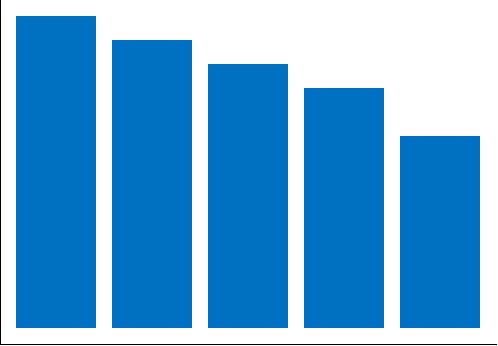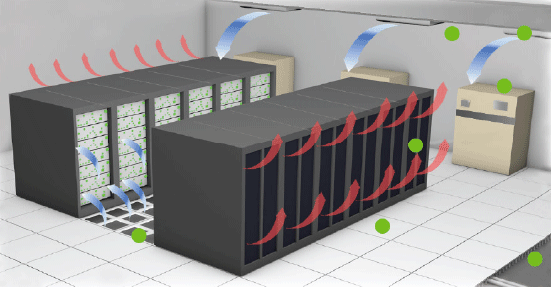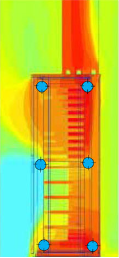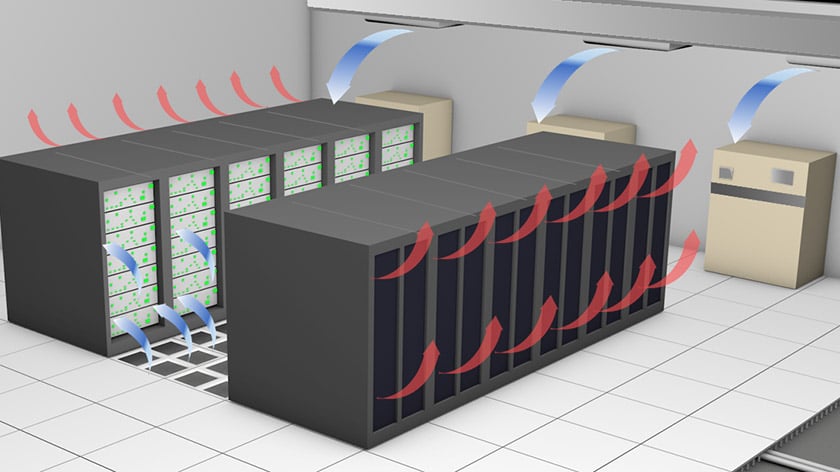Data Center Cooling Optimization Is Easier Than You Think
One of the most contentious areas of data center operating cost reduction is cooling. There is an ongoing tension between lowering cooling costs and...
2 min read
![]() Packet Power Team
:
Aug 8, 2017 9:00:00 AM
Packet Power Team
:
Aug 8, 2017 9:00:00 AM

Cooling is one of the main drivers of data center operating costs, but figuring out how to get the information needed to drive costs down can be confounding. Read on for ways to break the overall challenge into manageable pieces as well as what you need from a monitoring system to support each approach.
Cooling System Performance
Changes in the performance of a cooling system may not be easily identified as they may happen gradually or be very location specific. Placing environmental monitors in strategic locations will identify changes in cooling system performance caused by equipment deterioration or failure as well as physical obstructions or changes to the data center layout.
Monitoring features to look for:
Cooling Optimization
Many data centers operate at far cooler temperatures than required by customers or industry standards resulting in a substantial operating cost penalty. Rack inflow temperature monitoring can provide a baseline for cooling performance. As changes are made to contain and control airflow and gradually raise temperatures, monitors can track performance at the desired level of detail. The resulting 5-25% cost savings can deliver a payback within a year.
Monitoring features to look for:
Performance Improvement Validation
Capital investments typically require documentation of the subsequent benefits. A few strategically placed environmental monitors can report on the before and after conditions of a VFD retrofit or new containment system. Monitoring can justify past investments as well as help make the case for additional improvements.
Monitoring features to look for:
CRAH Efficiency
Environmental monitoring encompasses tracking differential pressure and humidity as well as temperature. Adding differential pressure and humidity sensors in strategic areas on the CRAH and plenums provides detailed performance and can help identify optimal settings.
Monitoring features to look for:
Service Level Agreement (SLA) Compliance
Colocation providers often have agreements with customers to maintain specific environmental conditions. This typically consists of rack level temperature monitoring with the corresponding documentation to show compliance.
Monitoring features to look for:
Facility Performance Benchmarking
Cooling systems can be influenced by changes in the data center and equipment performance. These can be subtle changes that are hard to track. A basic environmental monitoring system provides all the data needed to benchmark temperature, airflow distribution and energy usage over time.
Monitoring features to look for:
If you're convinced of the need to monitor environmental conditions, you might be thinking that managing cooling performance is expensive and complex. But it doesn't have to be. Packet Power's wireless environmental monitoring solutions check all the key features noted above and our monitors can be deployed and maintained at a fraction of the cost and time of competing systems.
Contact your local Packet Power partner or sales@packetpower.com to learn more.

One of the most contentious areas of data center operating cost reduction is cooling. There is an ongoing tension between lowering cooling costs and...

Cooling represents one of the largest portions of data center energy usage -- 20-35% on average. Most data centers are overcooled with ambient...

Cooling costs are a major component of data center operating costs. The economic and environmental benefits that can result from lowered cooling...